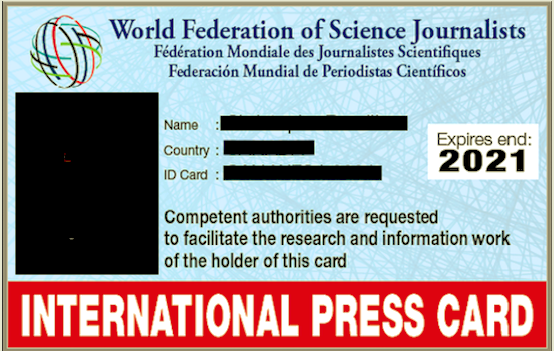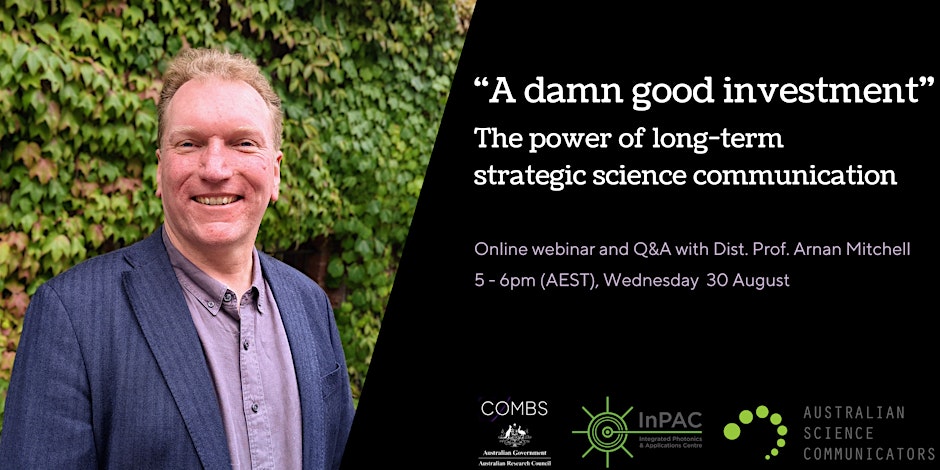The Pathway to Diversity in STEM Review will recommend how the Australian Government can support change so that people can access and feel they belong within STEM education, careers and industries.
On 8 September, the following response to the draft recommendations was submitted. The submission will be publicly viewable on the Government Consultation Hub in time, and is reproduced in full below.
Pathway to Diversity in STEM
Response to the Review Draft Recommendations
The Australian Science Communicators (ASC) commends the Diversity in STEM consultation process and appreciates the opportunity to provide comment at this stage.
This submission emphasises the pivotal role of science communication professionals in delivering and shaping the future aspirations for diversity in STEM, and the impact that increased and formalised support for science communication professionals would have in the sector.
The need for quality science communication
Science communication plays an important role in modern democratic society, forming links between scientific researchers and the wider community. Science communicators facilitate and encourage dialogue between scientists, policymakers, educators and citizens. Equipped to understand the science that affects them in everyday life, people are empowered to make informed decisions about their future.
Effective science communication plays a key role in reducing these barriers to access by ensuring that educational opportunities, research initiatives, and potential collaborations are shared widely and in a way that avoids misconception and bias. Across the profession there is specific expertise in reaching and engaging people who are at high risk of disengaging or with access barriers.
It is the view of the ASC that effective science communication plays a crucial and yet underappreciated role in facilitating the implementation of the recommendations of the Pathway to Diversity in STEM Draft Review. As such, we recommend the final Pathway Recommendations to:
- Acknowledge and call for adequate support and resources for professional science communicators within the STEM sector
- Many universities, government agencies and research institutions employ some form of marketing, communications or promotion staff, whose role it is to translate complex technical information and communicate it in a way that different audiences and stakeholders can understand. This is called science communication.
- However, these science communicators are typically under-resourced and required to be a one-stop-shop for all external communication needs. Often they are required to be a university marketer first and foremost.
- The skills and knowledge required to take complex information and share it in ways that are relevant to policy-makers, other institutions, educators, children, and the wider community are not to be taken for granted, and should be recognised as professional skills of science communicators.
- In the same way that scientific researchers bring skills and knowledge to their fields of expertise, so do those who communicate science.
- With this formalised and acknowledged role, science communicators would be able to contribute more thoroughly to the intent behind the Pathway to Diversity.
- Demonstrate the value of diversity of thought, especially among research leaders at government organisations and institutes
- We argue point 4b doesn’t go far enough to demonstrate the importance of utilising trained and experienced science communicators. 4b references the media and entertainment industry to work with industry and researchers to celebrate diversity in STEM.
- Informal science learning organisations, including museums, zoos, aquaria and science centres play a crucial role in celebrating diversity, as well as science journalists, and media and entertainment professionals.
- Representations of scientists and science as showcased in informal science learning organisations are important for visitors to see the range of ways science is done, the people involved, the importance of collaboration and showcasing that there is no singular way of being a scientist.
- Address the issue of Early- and Mid-Career Researchers (EMCRs) being dissuaded from participating in community engagement and outreach activities
- Scientists and researchers participating in outreach and community engagement activities is an important component of science communication. It allows non-scientists to not only meet with scientists, allowing opportunities for discussions, debates, and common understanding, but creates opportunities for children and young people to meet and see scientists as role models for future career aspirations.
- However, many EMCRs are typically dissuaded from participating in outreach activities.
- Supervisors, with their mentee’s interest at heart, will often provide counsel that outreach is a ‘waste of time’ as only core research and publications are considered important for career stability and progression.
- Those who are disadvantaged in the system are even more likely to be encouraged to ‘focus on their research’, or alternatively, are overwhelmed with requests to be the diverse person at an event.
- If ‘allowed’ to participate, EMCRs are typically unpaid for their efforts, or required to conduct outreach in their spare time. Further, few university panels account outreach activities as valuable when considering individuals for promotion.
- This trend is harming the opportunities for EMCRs, and especially those with additional barriers to promotion or success, from actively participating in science communication and the goals of the Pathway to Diversity purpose.
- In addition, it further reinforces the poor value perception that science communication and that it is not a professional expertise.
- Adequately fund the continued development of the evidence base in science communication to address diversity access issues
- An ongoing issue with the science communication community is the lack of connection between science communication research and practice. Practitioners often make decisions based on past experience, with little high quality evaluation methodologies or reports available for public consumption.
- While there’s broad interest in ‘best practice’, the research sector in science communication is thoroughly under-resourced to be able to provide adequate analysis or recommendations for Australian practice. With the exception of ANU (with Australian Federal investment), very few universities have been able to justify science communication research positions, and those who have science communicators in academic staff positions are often so overwhelmed with undergraduate teaching that they have zero capacity for practice or research.
- While research funding is linked to undergraduate or international student numbers, science communication will continue to be undervalued in the university sector.
- Best practice science communication needs to be based on findings from high quality research, but there typically isn’t the funding or resources available for collaborations between researchers and practitioners.
- We recommend funding to be allocated to science communication research conducted alongside practitioners, to continue to improve best-practice, with clear benefits of increased accessibility.
With these considerations, we support the Pathway and look forward to being key partners in its implementation.
About the Australian Science Communicators
The Australian Science Communicators (ASC) is the peak membership body representing the interests of those who work in, study, teach and have an interest in the field of science communication. The Australian Science Communicators has been bringing science communicators together for 30 years.


